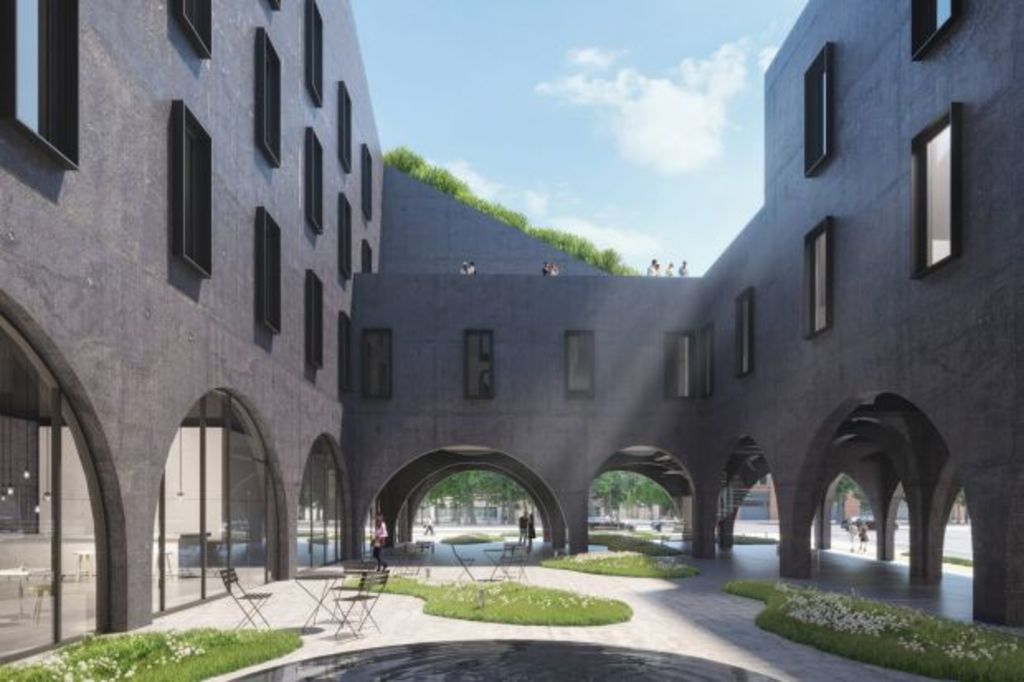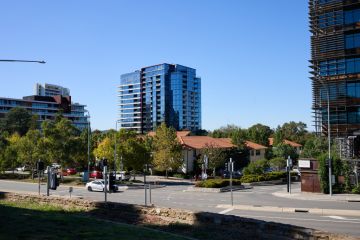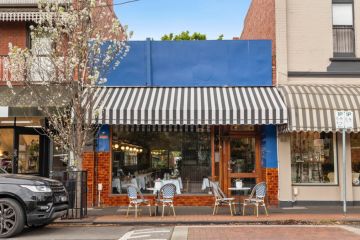The high-end New York hotel designed as a homage to ancient Roman architecture

It’s an architecture love affair that shows no signs of waning. The humble arch – celebrated for its aesthetic and structural qualities – is just as popular today as it was in the days of the early Romans.
One of New York’s latest hotels is winning praise for its contemporary take on the classic style. The Bedford Hotel will take up residence near Brooklyn’s famous Prospect Park.
The five-storey, 100-room hotel will feature graceful exterior archways at ground level to create a subtle divide between private and public spaces, and the Italian-style courtyard is where the arches will shine the most.
Architects ODA New York have designed a framed, secluded space softened by greenery, where light pours in from every angle.
Eran Chen, founder and executive director of ODA New York, says the aim was to create interior and exterior spaces with natural light, green spaces and chances to connect.
“Buffered from the street by an almost zen-like courtyard and garden, the hotel has a stacked and terraced rooftop, a living landscape that houses … bar and cafe,” Chen says.
“The interiors contrast the shadowy concrete of the facade with floor-to-ceiling whitewashed oak and vaulted millwork, offering a zone of serenity and retreat. Creating these opportunities in which people can thrive is always at the forefront of our work.”
The arches pay homage to local monuments, including the nearby Soldiers’ and Sailors’ Arch at the Grand Army Plaza.
- Related: Auckland’s skyline gets a shake-up
- Related: Where to find celebs and $77m estates
- Related: Life in a cheese warehouse?
The historical link with arches in architecture is most commonly traced to the Romans, who used arches in bridges, aqueducts, and large buildings – most famously the Colosseum and the Pantheon.
The pointed arch was adopted by Arabic architecture and used in mosques. It later became a calling card of Gothic architectur. However, it was the Romans who introduced the triumphal arch in 196BC.
Cities around the world borrowed the idea, embellishing and enlarging it. They are now international icons – the Arc de Triomphe in Paris, the Washington Square Arch and the Marble Arch in London.
Australia took up the fashion with gusto in the late 1800s, when it celebrated becoming a federated nation. A series of grand arches was installed in Melbourne, where the federal parliament opened.
These included Prince’s Bridge Municipal Arch, a temporary arch built on the now named Princes Bridge, which was then the entrance to the city.
Arches have waxed and waned in popularity since but never completely disappeared. During the ’70s and ’80s they were used as entrances and room dividers in homes.
Today they can be seen in large-scale projects such as Collins Arch, a high-rise under development in Melbourne, and upmarket bars and restaurants such as Osteria Oggi in Adelaide and The Buena in Sydney.
Melbourne architect Mat Wright, director at Jolson, says the arch brings a sense of identity, but that it’s not just aesthetics that matter. “It’s rooted in such classic architecture, but also its structural strength is mathematical so there is an efficiency about it,” Wright says.
Wright and his team have showcased arches in a boutique apartment project in Armadale, Melbourne. At Huntingtower Road, most of the arches are in the living areas of the garden residences, bringing in a huge amount of light.
While maintaining the timeless style, Wright opted for a modern touch by scalloping the edges and creating a dynamic between textures.
It appears the arch remains as significant to architecture today as it did centuries ago.
We recommend
States
Capital Cities
Capital Cities - Rentals
Popular Areas
Allhomes
More







